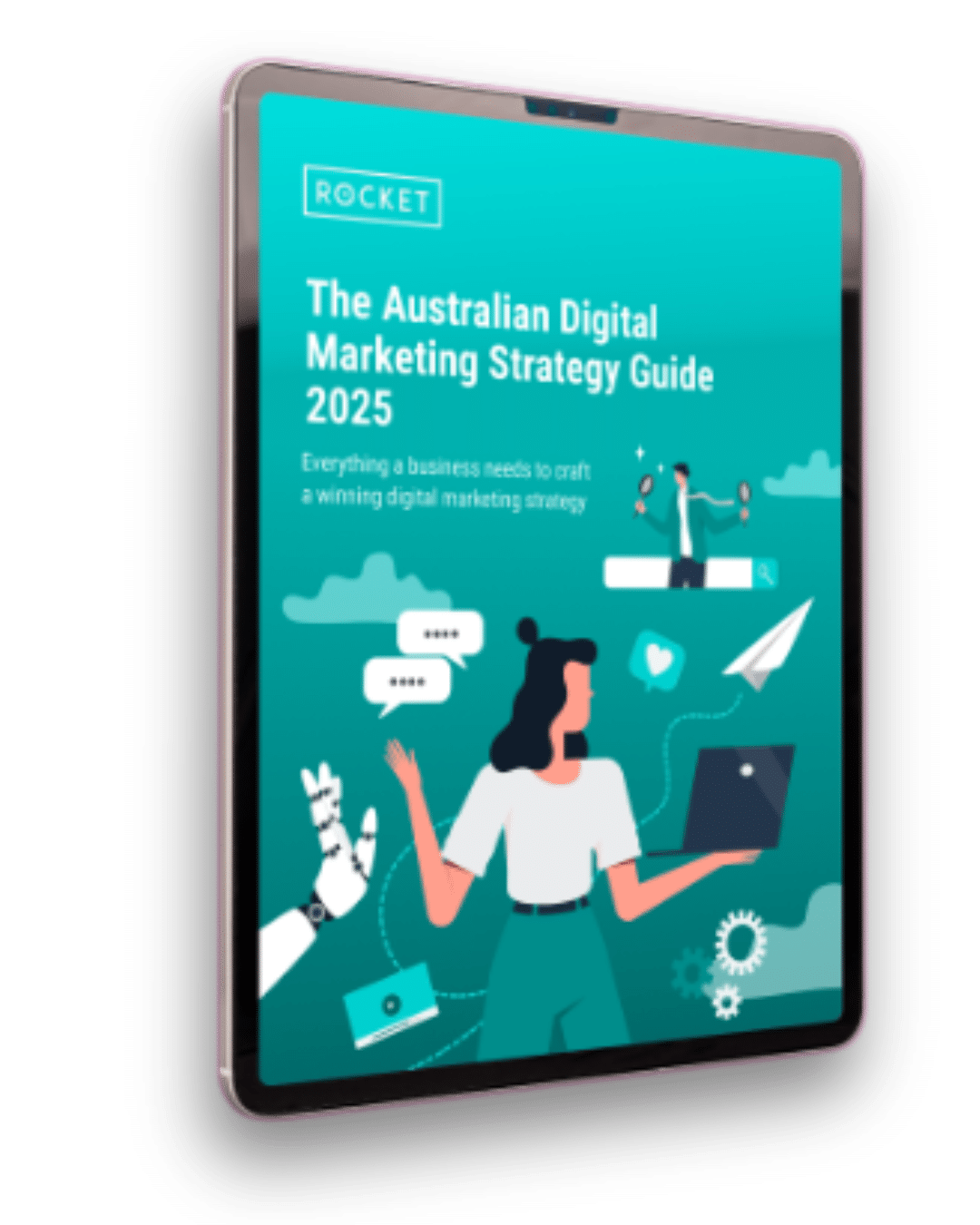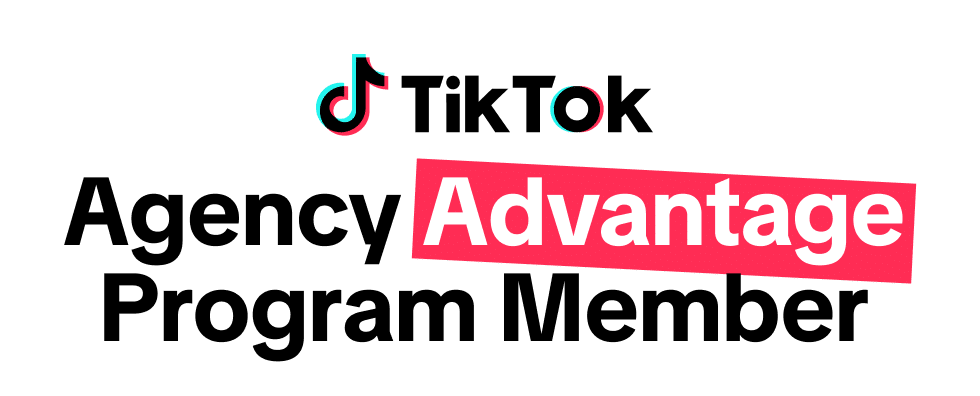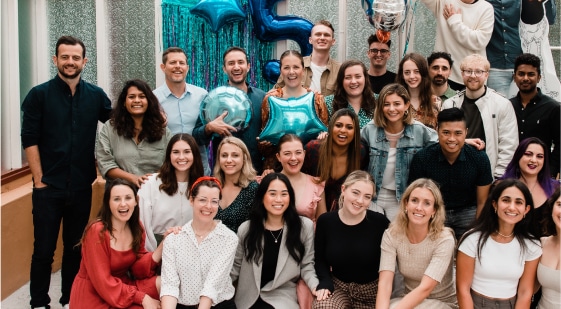Fixed! 25 Practical Tips to Turnaround a Failing Campaign
I’m going to state the obvious. Not every marketing campaign my team works on is an award-winning case study.
Shocked? If you’re an experienced marketer, you certainly won’t be. Digital marketing gets harder every year (and it wasn’t that easy to begin with).
The pace of change, increased competition, and the overwhelming number of choices mean that you have to be ready to handle underperformance. Hoping to help those seeking better outcomes, I asked our team of digital marketing specialists to share recent things they’d done to successfully turn around a struggling campaign at Rocket.
This is not an exhaustive list of what can be done. It’s just a sample of the successful things we’ve done recently. And it’s certainly not a list of things you should simply apply to your campaigns. Just because something worked previously for someone else, it doesn’t mean it’ll be effective in your specific context.
That said, I hope one or more of the actions below can help or at least get you thinking about where your problem might lie.
Here’s how Rocket Agency recently turned failing campaigns into successful ones
Ad platforms tips
1. Consider your entire marketing funnel before making a change to ad spend. This one is important. It’s common for a client to ask us to direct more of their media budget to the channels that drive actual sales or leads. It’s a change that obviously can be very effective.
In a recent example, this resulted in a cutting of the budget for an awareness-focused Facebook campaign. The result? Reducing Facebook spending ended up reducing the number of total conversions from Google Ads (even though Google Ads was now enjoying more budget). The lesson? In most cases, bottom-of-the-funnel conversions don’t appear out of thin air. An investment in effective awareness campaigns can lift results across the board. Buyer journeys are complex, and your ad spend should try to match true buyer behaviour over the long term.

2. Find and remove wastage. This is a big one. We regularly inherit campaigns from in-house teams or other agencies that have quick and impactful wins waiting to be found and implemented. A recent example was an audit of keywords, ad creative, audiences, age, gender, location etc as well as campaigns/ad groups. By finding specific areas of spend that had underperformed, it was simple to make changes to turn results around.
3. Get your cross-channel media management right. Getting the balance right in terms of how you split your budget across different channels and platforms is a critical part of overall performance. Not all channels perform in the same way, and more critically, different channels will impact different points in the buyer journey. A recent challenge involved a client who had a number of different agencies managing different channels. This made constructive discussions about channel mix a challenge. Consolidating channels under Rocket as their full-service digital marketing agency had a big impact on performance.
4. Consider changing the ad platform campaign objective. In this example, the objective in Meta was changed from leads to awareness. Sometimes, an existing objective doesn’t tell the whole story, and a change can have a massive impact on how and when your ads are shown and the overall performance of your campaign.
5. Refine your ad copy. We've seen campaigns transformed by a simple copy refresh, and it's a tactic we use all the time for our clients. It’s important to craft ad copy that resonates with your audience's needs and aligns seamlessly with your campaign structure, from landing page through to keywords, ensuring ad copy is compelling and relevant. By understanding audience motivations and tailoring copy accordingly, you enhance engagement and CTR, ultimately boosting campaign performance.
6. Test your targeting. We often inherit campaigns where different targeting methods are mixed up within a campaign, and it can be challenging to know what’s working. Testing different targeting methods to discover what was actually performing was a highly effective recent change.
7. Test your keywords. Keyword performance changes over time. Recently and frequently, we have inherited campaigns in which new keywords and a careful review of existing keywords are required to return performance to its optimal level.
8. Are you testing the latest and greatest? A common step we take when we inherit a campaign is to audit the level to which it is utilising new functionality within each platform. That said, just because an option is new does not make it effective in general or for a specific campaign, but we’ve had plenty of success (including in a recent campaign) in carefully applying new platform options.
9. Did you warm up your audience? Jumping straight into a conversion/sale campaign can generate disappointing results, especially if you have not primed your target audience to make a purchase. In a recent example, a client lacked an effective traffic/brand awareness campaign and creating such a campaign boosted overall conversions.
Creative tips
10. How good is your creative? The best-run campaign in the world will fail if the creative driving it is poor. A huge tip from all our teams is to make sure the creative you have is strong and platform-appropriate. If not, expect to struggle no matter how much media budget you throw at the problem. It is no exaggeration to say we’ve left campaigns unchanged except for changing the creative, and we’ve seen performance double. We had several recent examples in this area.
11. Hit them where it counts. Emotion is one of the most powerful drivers in determining campaign effectiveness. A recent change involved updating existing creative to inject emotion. It’s very common to be given creative that simply lacks any emotional impact.
12. Customise your creative. Different ad platforms require a different approach to creative. Understand best practices for the platforms you’re using and adjust your creative accordingly. We’re constantly taking this action, so it’s always a recent example.
13. Do you stand out? It’s obvious, but in order to perform, your creative has to be eye-catching in the context of where it will appear. Again, this is a regular change being made by our creative team.
14. See what works. Implement A/B testing and experiment with different creative variations. This will enable you to pinpoint the most effective elements and refine your strategy based on insights derived from data-driven analysis. This iterative process empowers you to optimise your creatives systematically, ensuring they resonate with your audience and maximise campaign performance.
15. Review the hierarchy of the elements within the creative. It’s common to see creative that does not focus on the part of the message that matters most to the audience or that will most likely trigger action. A recent tweak to the creative recently made all the difference. Similarly, go shorter. Fewer words work.
Conversions
16. How good are your landing pages? Just because a landing page worked in the past, does not mean it’s the best place to take your audience today. Audiences change, competitors change, and expectations change. It has to be low-friction, offer value, and look the part. The landing page has to support the user in achieving their goal. Recent client examples include changing the landing page being used, as well as overhauling an existing landing page.
17. Invest in CRO. Even if your visitors engage well with your landing pages, they’ll often still visit other pages on your website. If you offer them a poor experience, there is a good chance your underperforming cost per sale or lead has as much to do with the website experience as the campaign itself. Conversion rate optimisation (CRO) can increase the performance of everything you do in marketing by improving the performance of your website. We’ve recently succesfully overhauled the top pages on a client’s website by undertaking a CRO project.
18. Testing is a big opportunity for many campaigns. Run multiple variations and pick the winner; your campaign performance can bank a big win. Continue with this approach for ongoing uplift. We constantly do this for our client campaigns.
19. Is your data reliable? It’s incredibly common to inherit campaigns where the tracking in platforms like Google Analytics is flawed, sometimes remarkably so. This is always bad, but especially so when you discover that big (and bad) decisions have been made based on this flawed data. Even worse, all platforms optimise behind the scenes with data-based algorithms so errors in your conversions will not just be telling you the wrong thing, the platform itself will be optimising based on these errors. An audit of data and analytics is how we start all client engagements and we find issues that need to be fixed in most cases.
20. Is your CRM more important than GA4? Many clients have long sales cycles and transactions that ultimately happen offline. It’s often more important to assess performance by looking at contact-level data within a CRM than to review aggregated data like in GA4 when trying to understand what’s worked. A recent example was working with a client to ensure their CRM could show us everything that contributed to real-world offline sales, which resulted in much better overall decision-making regarding their campaigns.
SEO
21. Ensure the basics are done. We inherit campaigns all the time where there has clearly been SEO activity, but they have completely neglected the basics, such as updating page titles and H1s. For all SEO clients, this is an early and important activity.
22. Implement a content strategy. Regularly publishing informative content demonstrates expertise and establishes you as a thought leader in your industry. We often develop content strategies prioritising the creation of high-quality, relevant content that our clients’ audience would be interested in reading about. It’s a very effective way to enhance your website's visibility in search engine rankings and attract more organic traffic while building your brand’s credibility.
23. Make the development and content changes that have been recommended by your SEO team. Taking this step is often the best way to get SEO results moving in the right direction. Our development team makes coding changes for many of our clients, with many recent examples of results lifting as a result.
24. Be found locally. We often see that clients who did not previously invest in local SEO miss opportunities to land high-quality leads - simply because their visibility within their local audience was neglected. Local SEO can help you stay competitive in your geographical area, attract better-fit leads, and improve your brand’s reputation in the market.
25. Can you bring back the past? People will often look for new opportunities in SEO as the first step in improving performance. Often, though, what worked in the past and has since dropped is where the easiest wins are. It's much easier to optimise for terms we already know work rather than starting from scratch in a new area. Again, this is something we commonly look at for new clients.
Tip of the Iceberg
I could keep asking the team for tips, and the team would continue to deliver. For most campaigns, though, something in the above list will likely deliver value.
If you’d like the experts at Rocket to have a look at your digital marketing or creative to see where improvements might be possible, get in touch. We’re in Sydney and Melbourne, but we work with clients across Australia.
Drop us a line here or call us on 1300 059 620.

Webinar: Digital Marketing in Australia
Join us for a live, moderated 60-minute webinar presented by James Lawrence on the latest changes to digital marketing. Understand attribution and data challenges, AI and how to balance brand and performance ads. Get 8 actionable steps to get digital right this year.
About the Author

James is co-founder of multi-award-winning Australian digital marketing agency Rocket, keynote speaker, host of Apple’s #1 Marketing Podcast, Smarter Marketer, and co-author of the 2019 Amazon Australia’s #1 best-selling marketing book of the same name. He was also a finalist in 2019 and 2020 B&T Marketer of the Year.
James’ 15-year marketing career working with more than 500 in-house marketing teams inspired the 2019 release of Smarter Marketer. It has been endorsed by marketers at some of Australia’s leading brands, including Hubspot and KPMG.
In 2022, James launched the Smarter Marketer podcast, the definitive podcast for Australian marketers. Released fortnightly, James sits down with local experts and global authorities to discuss how Australian marketers can become more successful in their careers.

Join 20,000+ subscribers
Get fast, useful and no-nonsense weekly emails on the most relevant marketing topics for Australian businesses.
Other Articles you might be interested in…

The Australian
Digital Marketing Strategy Guide 2025
Everything an in-house marketer needs to craft a winning digital marketing strategy.








































